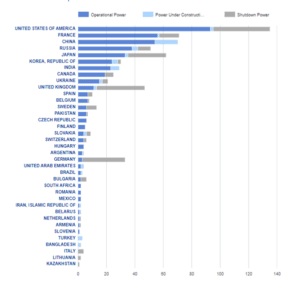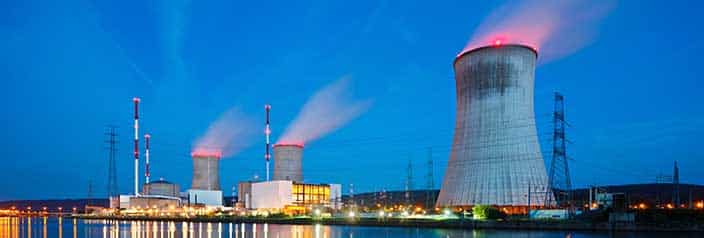By Michael Collins, Investment Specialist, Magellan
But the clean-energy option will forever risk a catastrophe.
Fukushima, on the northeast of Japan’s largest island, is vulnerable to earthquakes and tsunamis. From 1971, the area hosted the Daiichi nuclear plant that was built 10 metres above sea level. The plant and others ensured nuclear energy supplied 30% of Japan’s power needs.
That is until an earthquake struck in 2011 and a tsunami swamped three reactors at the Daiichi plant. Radioactive material escaped and more than 2,300 people died from what a parliamentary inquiry described as “a profoundly man-made disaster”.
Tokyo reacted to public alarm. Within a year, only one of Japan’s 54 nuclear reactors was operating. Enthusiasm for nuclear power, which reached a peak of 17% of global energy production in 1996, dimmed around the world.
Reduce one risk but still face another. That danger is climate change. But there are so many obstacles to reducing emissions. Voters oppose carbon taxes. Renewable energy struggles to match fossil fuels on reliability and cost. ‘Energy security’ has gained renewed political significance since Russia invaded Ukraine.
What to do? A large part of the answer could be nuclear energy, which is generated in a process known as fission – when uranium or plutonium atoms are split to release heat that makes steam to spin turbines. Even though radioactive waste is produced, policymakers are talking of adding to the 439 reactors in operation across 32 countries that still supply about 10% of the world’s energy.
It’s easy to see why leaders are attracted to nuclear energy. As long as countries can source uranium or plutonium, the nuclear option offers energy self-sufficiency and is the lowest-cost greenhouse-gas-free energy – one that is cheaper than all but the lowest-cost fossil fuels.
Two promising developments could make nuclear more appealing. The first is the coming of commercial mini-nuclear reactors. These mini-reactors would produce between 300 megawatts (small) and 700 megawatts (medium) of power compared with at least 1,000 MW (electrical) produced by standard-sized reactors.
The advantages of mini-reactors are lower initial capital costs, less-complex design and that they take only four years to build rather than the decade needed for standard facilities. Mini-reactors can be built and shipped, thus are a better option for remote areas. They are safer because they require no manpower or electricity to shut down. They produce less waste. They are cheaper to decommission.
The second development is nuclear fusion. Whereas in nuclear fission an atom is split, fusion is combining atoms. When fusion occurs, the difference in mass between nuclei and the newly formed heavier-but-lower-mass atom is released as energy. It takes special machines (tokamaks) or lasers to generate the intense heat and powerful magnetic forces required to produce an energy so powerful that one litre of fusion fuel matches 55,000 barrels of oil for energy.
Aside from producing greenhouse-gas-free energy, fusion comes with two other notable advantages. One is that fusion eradicates the risk of a nuclear meltdown because, if disturbed, the process stops. The other is that no radioactive waste is produced. Fusion research is expensive, however, and advances whereby fusion reactors offer the world affordable power seem far off and might never happen.
That’s the best hope too for the devastation that nuclear energy risks. Accidents that include Three Mile Island in the US in 1979, Chernobyl in the former Soviet Union in 1986 and Fukushima are blamed on human error. A possible calamity occurred in March when Russian shelling started a fire at the Zaporizhzhia nuclear plant in Ukraine, which with six reactors is Europe’s largest. The incident highlighted the vulnerability of nuclear facilities to war, terrorism, suicidal rage or rogue states turning a nuclear plant into a military base, as Russia has now done with Zaporizhzhia. Many say ageing nuclear facilities pose a threat. A risk tied to the internet age is cybersecurity.
Even with all the risks, nuclear energy is an established source of power that will gain traction as an answer to climate change, especially if more technological leaps are made. Nuclear energy might be most notable for how its adoption will vary across countries as communities judge their tolerance for the risks surrounding the most-promising energy solution to mitigate global warming.
To be sure, nuclear is not the sole solution for climate change. Leaps in renewable technology or its economics could undermine the need for nuclear. But the reverse could apply too. The shift to more nuclear could take too long to contain the rise in the earth’s temperature to 2 degrees Celsius. Any nuclear-building spree comes with risks and no doubt cost overruns. Against this, only three notable accidents in more than six decades is a fair safety record.
Energy security is what gives nuclear energy fresh appeal. Expect more policymakers to push for nuclear. It’s just that the next nuclear mishap might, Fukushima-style, set back the best option to mitigate climate change on every measure but safety.
For the full version of this article and to view sources, go to: magellangroup.com.au/insights/
Number of nuclear reactors by country

Source: International Atomic Energy Association. Found at pris.iaea.org/pris/


